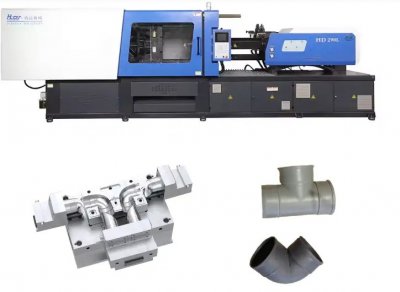One of the most common and economical ways of manufacturing all over the world is plastic injection molding. It allows manufacturing of high quality, durable and accurate plastic components to an industry such as automotive, medical and electronics and packaging.
What Is Plastic Injection Molding?
Plastic injection molding This process involves the injection of high-pressure molten plastic into a metal tool and allowed to solidify and eject. The process is most suitable in the manufacturing of big quantities of same parts having strict tolerances and great surface finishes.
The Injection Molding Process
Clamping:The two halves of the mold are firmly clamped together.
Injection: The plastic resin (ABS, PP or PC) will be melted and injected into the mold cavity.
Cooling: The flows of molten material cools and solidifies in the mold.
Ejection: The shape is ejected by pushing with ejector pins.
Post-Processing: It can involve the trimming of parts, or painting or assembly.
Materials Used
Common materials include:
ABS due to toughness and durability.
Flexibility and chemical resistance: polypropylene (PP).
Strength and impact resistance Nylon and Polycarbonate (PC)
Demanding applications are made with engineering-grade plastics such as PEEK and PPS, whereas biodegradable and recycled plastics are used to promote the goal of sustainability.
Mold Manufacturing and Mold Tooling
The quality and efficiency of the production is dependent on precision tooling. Multi cavity molds enable multiple components in one cycle, whereas a hot runner system minimizes wastage. Mold flow analysis will make sure the resin is filled in properly without defects.
Advanced Techniques
Insert Molding: It entails the insertion of metal components or threads into plastic.
Overmolding: ushers in multi materials, enhancing either grip or look.
Low-Volume Molding: It is applied to prototypes or small runs.
Precision Molding: Provides close tolerances to medical and aerospace items.
Advantages
Mass production of high efficiency.
Exceptional repeatability
Cooperation with a variety of thermoplastics.
Economical per part following investment in the tool.
Supports complicated shapes and detailed form.
Industry Applications
Injection molding is used in:
Automotive: Connectors, trims, dashboards.
Medical: Housings, Surgery parts, syringes.
Electronics: Connectors, Enclosures.
Packaging: Bottles, containers, Caps.
Construction: Fittings, insulation parts.
Quality and Sustainability
Factories in the modern world employ injection machines that consume less energy and recycled resin to minimize waste and emission. Dimensional accuracy and reliability are guaranteed by the strict ISO-certified quality control.
Optimization of Cost and Process.
The factors that are important in cost are the complexity of the mould, the type of resin and the volume of production. Automation, optimum cooling and rapid tooling save time and money.
Conclusion
The production of the modern world is still based on plastic injection molding. It is a combination of precision engineering, material innovation, and sustainability that assist in the manufacturing of anything between medical equipment and consumer electronics, the driver of industries worldwide with quality, speed, and scalability.

